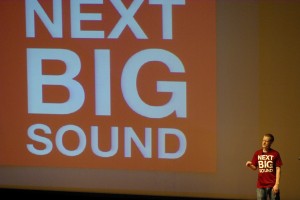Aug10
Innovations in Analytics: new value from new and old data
Point: Develop new products and services by applying innovative analytics to unused data.
Story: Three companies presenting at Techstars Demo Day last week illustrate a category of innovation that is based on new uses of data. First, Retel Technologies is a new company that helps retailers understand patterns of behavior at store locations. Many retailers have security cameras on site, but they rarely look at the data generated by those cameras because of the sheer volume of data. The raw data is typically viewed only in the event of a robbery. Retel, however, developed a cost-effective human-aided video data analysis service that extracts workplace performance analytics from all that unused video footage. For example, the system can help spot problems such as dirty tables at fast-food locations, employee theft, and capacity bottlenecks (such as a shortage of cashiers during certain hours). Retel provides its clients monthly reports to help managers see trends, behaviors, and time-of-day patterns that can help them better manage their stores.
new company that helps retailers understand patterns of behavior at store locations. Many retailers have security cameras on site, but they rarely look at the data generated by those cameras because of the sheer volume of data. The raw data is typically viewed only in the event of a robbery. Retel, however, developed a cost-effective human-aided video data analysis service that extracts workplace performance analytics from all that unused video footage. For example, the system can help spot problems such as dirty tables at fast-food locations, employee theft, and capacity bottlenecks (such as a shortage of cashiers during certain hours). Retel provides its clients monthly reports to help managers see trends, behaviors, and time-of-day patterns that can help them better manage their stores.
Second, a new company named Next Big Sound uses the realtime flow of events in  social media to help band managers. The music industry is undergoing big changes, but sales of concert tickets are the highest they’ve been in ten years, and people are buying more music than ever. Giving band managers data can help them make better decisions. For example, real-time data from Twitter can be captured and analyzed to show who’s talking about which band and where they are — data that can provide great insight into a band’s fan base. Next Big Sound collects a host of both social media and web data to provide real-time marketing analytics that bands can use in variety of ways. For example, band managers can use the data to pinpoint the demographics of fans, scout new concert locations, and improve online ad placement. They can even suggest that a band mention people or events in the local area or give a shout-out to high-profile fans at a concert.
social media to help band managers. The music industry is undergoing big changes, but sales of concert tickets are the highest they’ve been in ten years, and people are buying more music than ever. Giving band managers data can help them make better decisions. For example, real-time data from Twitter can be captured and analyzed to show who’s talking about which band and where they are — data that can provide great insight into a band’s fan base. Next Big Sound collects a host of both social media and web data to provide real-time marketing analytics that bands can use in variety of ways. For example, band managers can use the data to pinpoint the demographics of fans, scout new concert locations, and improve online ad placement. They can even suggest that a band mention people or events in the local area or give a shout-out to high-profile fans at a concert.
Third, Mailana is a company that uses communications analytics to help people leverage their social connections. These days, people are inundated by connections to other people. It’s not hard to have hundreds or thousands of connections in the form of entries in e-mail address books, friends on Facebook, colleagues on LinkedIn, and followers on Twitter. But who among the hoard of connections are the true trusted friends that one can really count on Mailana uses data on frequency and patterns of communication to automatically identify a person’s inner circle of most-trusted friends. Furthermore, Mailana helps people merge inner circles — a good trusted friend or a good trusted friend is far more valuable than a casual forgotten connection to another causal forgotten connection. Mailana helps people build and use the high-value core of their social graph.
In each of the three companies, innovative use of data provides new value.
Action:
- Inventory the data sources around you, your company, and industry
- Consider the potential analytic value of the data — what you might learn from that data? (or what might you learn more quickly?)
- Leverage low-cost computing and workflow technologies to extract new and actionable knowledge
75jtpgi24x
Comments Off on Innovations in Analytics: new value from new and old dataCase study, Entrepreneurs, Innovation, New Product Development, Opportunity, Strategy










